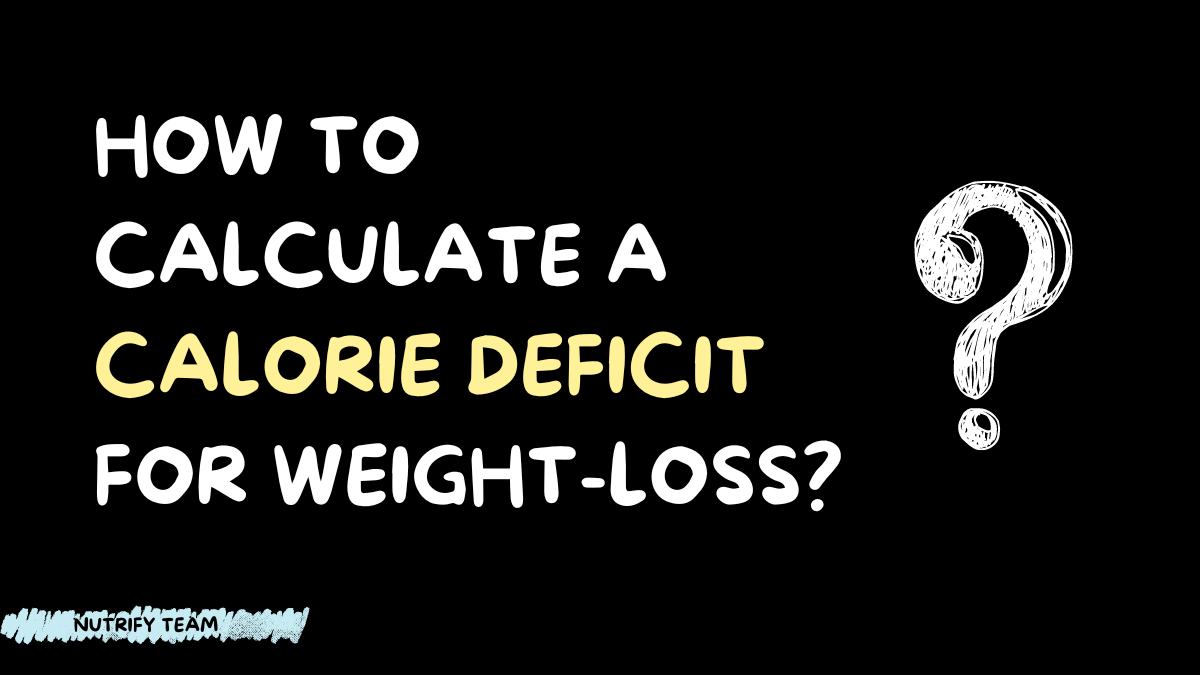How to Calculate a Calorie Deficit for Weight Loss
By Nutrify Team on Published on 10/2/2024

#Understanding Calorie Deficit
A calorie deficit is the fundamental principle behind weight loss.
It occurs when you consume fewer calories than your body requires to maintain its current weight.
By creating a calorie deficit, your body starts using stored fat for energy, leading to weight loss.
Using a calorie deficit calculator can help you accurately determine how many calories you need to reduce from your diet.
#The Role of TDEE and BMR in Calorie Deficit
#What Is TDEE?
Total Daily Energy Expenditure (TDEE) is the total number of calories you burn in a day, including all physical activities.
Calculating your TDEE helps you understand how many calories you need to consume to maintain your current weight.
For precise calculations, tools like the Omni calorie deficit calculator are invaluable.
#Understanding BMR
Basal Metabolic Rate (BMR) represents the number of calories your body needs to perform basic functions at rest, like breathing and digestion.
To lose weight, you can adjust your BMR by considering your activity levels.
Learn more about how to calculate your BMR and TDEE from MedicineNet's guide.
#Steps to Calculate Your Calorie Deficit
Calculate Your Maintenance Calories: This is the amount of calories you need to maintain your current weight, which you can estimate using the Calorie Calculator. 2.
Set Your Calorie Deficit Goal: A general rule of thumb is to create a deficit of 500 calories per day, which can help you lose approximately 1 pound per week.
The Healthy Eater calorie deficit calculator provides a straightforward way to set a realistic weight loss target.
Adjust for Physical Activity: Incorporating exercise into your routine can increase your calorie burn.
For more detailed guidance, refer to Myprotein's 3-step calorie deficit method.
#Calorie Tracking Methods
Tracking your daily calorie intake is crucial for maintaining a calorie deficit.
Use apps or traditional food journals to log your meals.
It's also essential to understand macronutrient breakdown to balance your protein, carbohydrate, and fat intake effectively.
#Fat Loss Strategies with Calorie Deficit
#Combining Diet with Exercise
Achieving a calorie deficit through diet alone can be challenging.
Combining it with exercise maximizes fat loss and boosts your metabolism.
Adjusting your diet to include nutrient-dense foods while increasing physical activity is key to sustainable weight loss.
For more information on creating an effective calorie deficit, check out our article on Understanding Calorie Deficit: The Key to Effective Weight Loss.
Remember, while calculating and maintaining a calorie deficit is crucial for weight loss, its always recommended to consult with a healthcare professional before starting any new diet or exercise regimen.
Frequently Asked Questions
Find answers to common questions
Use a calorie deficit calculator to determine your daily intake based on your weight, height, age, and activity level.
Calorie tracking apps and fitness devices are great tools to monitor calories burned for weight loss and ensure you are staying on track.
Focus on healthy eating for weight loss, maintaining a modest deficit, and incorporating physical activity. Avoid extreme calorie reductions that can slow your metabolism.
